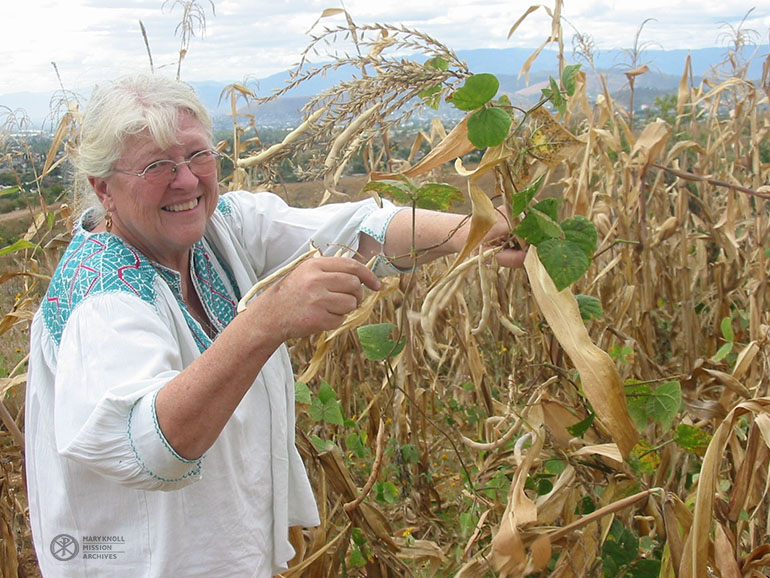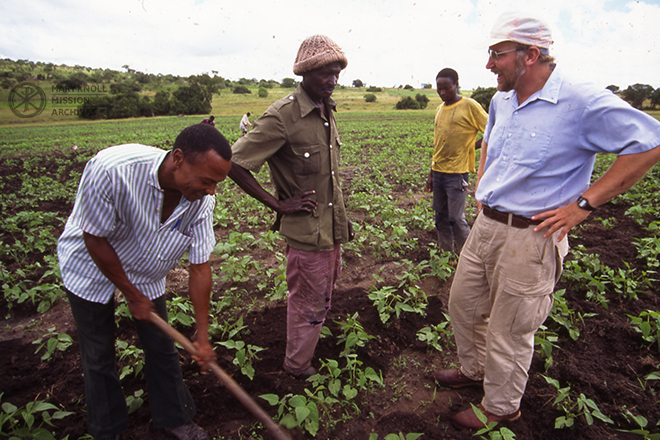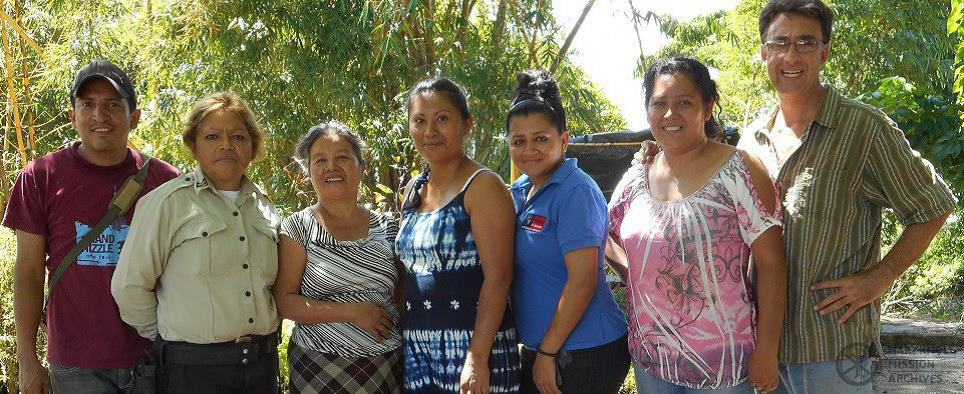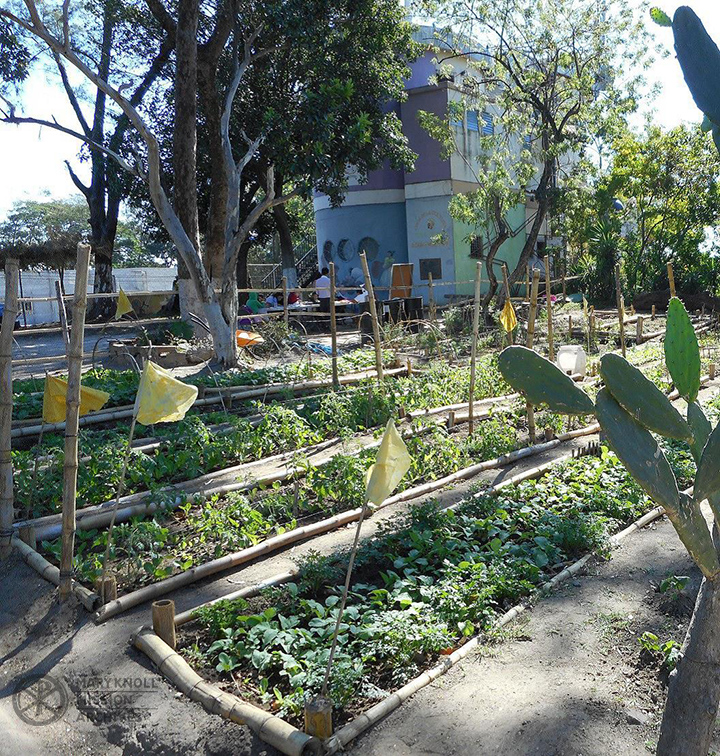Maryknoll Lay Missioners serve all over the world, and in their mission work, many of them experience life on the farm. Sometimes the farm is sprawling and feeds the whole community. Other times it’s just a few square feet in the backyard. And sometimes it isn’t a traditional farm at all, but a community garden in a bustling city. The Lay Missioners share their stories of life on the farm in their newsletters, articles in Maryknoll magazine, and in their blogs. This month we hear from three Lay Missioners whose lives and missions are deeply connected to the land, their communities, and the food they shared.
We have finally got the harvest in! We planted 2 varieties of white corn, 1 yellow, 1 pinto, and 1 blue. The corn was from a region to the north and matured a little later than the valley corn. We got a colorful crop. The beans are from the valley and grew in abundance. The people call them frijol de chivo or goat beans… The beans are in with the corn but the squash is between each 5th or 6th plant. My hands are nicely growing calluses where I need them and the cuts are healing. I really love being out in the fresh air working. I was thinking one day, “it doesn’t get much better than this” when the ants whose territory I’d invaded let me know we were not yet in the peaceable kingdom.
Our Ngarawani Farm aims to grow enough food to support Chipuka Polytechnic, a diocesan technical school. With students doing much of the planting, weeding and harvesting, the farm helps offset the expenses of feeding 100 students each day. Tropical corn, our principal crop, grows slowly – six months from seed to harvest. The corn is disease and insect-resistant, but hazards abound. Porcupines the size of bear cubs with 12-inch stiletto quills eat ripe corn like candy, taking human-sized bites out of fresh ears.
I now work with a community garden in Ciudad Delgado, a poor, densely populated neighborhood of San Salvador. I work alongside 15 people from the neighborhood to build and cultivate a garden from neglected land surrounding the community center. The garden will provide fresh, organic produce for the participants and will be a demonstration project to educate the community about gardening, food and nutrition. After weeks of clearing stands of bamboo, pruning trees, digging, sifting, and moving soil, and removing bricks, rubble, and trash – all by manual labor – we finally built and filled 12 garden beds. Everything gets used: bamboo to line garden beds and build a fence, bricks for a greenhouse floor, rubble to fill in walkways. Leaves and brush become compost. We started planting in October, and soon we’ll harvest the first crops of radish and lettuce. In the coming year we await cucumbers, celery, tomatoes, eggplant, cabbage, green beans and an array of herbs, just to name a few.
Content of this post created by Kathryn Spicer.




